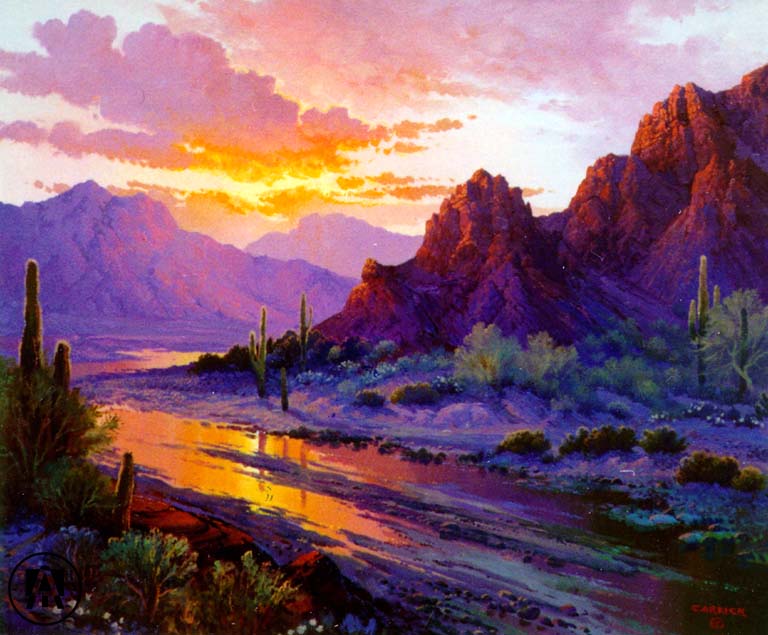
Graduate Take-Home Exam
Type your answers and conform to word limits. Return the completed exam
by Friday, 23 February at 1:00 p.m. Please use an alias
to identify your exam. The exam is open-book and open-notes.
- David Gori and Dan Robinett discussed relationships between hydrology
and vegetation. Briefly contrast hydrology/ecology relationships on the
two sites, then compare and contrast the two sites with respect to the
following: management goals, constraints on accomplishing the goals, and
current management actions. [40 points; 400 words or fewer]
- Assume the goals for the two sites are reversed. Describe management
actions you would take to meet the goals at one of the sites (in
your response, describe which site you are selecting). [10 points; 150
words or fewer]
In-Class Exam
- Briefly describe a realistic scenario in which two specific objectives
of vegetation management would conflict with each other. [6 points]
- Both David Gori and Dan Robinett described changes in vegetation that
resulted from downcutting of the stream channel (i.e., headcutting or
channelization) and fire exclusion.
- According to Gori and Robinett, what factors triggered changes in the
channel and fire regime? [5 points]
- Briefly describe the presumed historic vegetation (i.e., before Anglo
settlement) and contemporary vegetation on each site. [8 points]
San Pedro, before Anglo settlement:
San Pedro, today:
Altar Valley, before Anglo settlement:
Altar Valley, today:
- What are the general management goals on each site? [4 points]
San Pedro:
Altar Valley:
- Select one of the sites (i.e., circle one, below). How does
current vegetation constrain contemporary management goals on this site?
[5 points]
circle the site you are describing: San Pedro Altar Valley
- Briefly describe the single best management strategy to overcome the
constraint listed above. [5 points]
- The components or processes of the natural world that we choose to
conserve depend to a great extent on human values. These values change
over time, at least at the level of societies. Briefly describe one
example of a societal value that has changed within the last few decades.
[4 points]
- Do scientists or managers (circle one) have a greater
role in deciding what objects or processes will be conserved? [2 points]
List several factors that influence the decision about what to conserve.
[3 points]
- Select one technique that can be used to describe historical changes
in vegetation.
- Name the technique. [2 points]
- Briefly describe how the technique is used. [4 points]
- During what temporal period does the technique "work" (e.g., 1930s to
present)? [2 points]
- Within this period, what is the temporal resolution of the technique
(e.g., ±100 years)? [2 points]
- Indicate whether the following descriptors pertain to ordination (O),
cluster analysis (C), both (OC), or neither (-). [1 point each]
- ____primarily used to classify similar sites
- ____similar sites have little distance between them
- ____involves several dependent variables
- ____primarily used to summarize and display patterns when
relationships are unclear
- ____results are presented with a dendriticam
- Sketch an ordination diagram or dendrogram with the following
properties: (1) 10 sites were sampled; (2) among all sites, sites 1 and 4
are most similar; (3) sites 2, 3, 6, 7, and 10 form a discrete group; (4)
sites 5, 8, and 9 form another discrete group. [8 points]
- Among ecologists, the model of vegetation dynamics described by
Westoby et al. has replaced the Clementsian model of succession. What is
the model called? [2 points]
- List and briefly define the two fundamental components of the model
forwarded by Westoby et al. [4 points]
- Give an example of one of the components for the site that
encompasses Eriopoda Station at Santa Rita Experimental Range. [3 points]
- Describe the plant with the following seedling description code: 1-0
DF P-45-8-3.5. Would you plant this seedling on a southwestern aspect at
2000 m (6600') in the Santa Catalina Mountains? Why or why not? [6
points]
- List one specific method, excluding habitat typing, that is
used to estimate site quality. [2 points]
- Determine the habitat type of this site: Site is on a northeastern
aspect at 1,540 m. Thin, poorly developed soil overlies the sandstone
parent material. Overstory vegetation is an open stand of Pinus
ponderosa, with scattered Juniperus deppeana and Quercus
emoryi. A well-developed shrub layer is dominated by
Arctostaphylos pungens, and several other shrubs typically found in
Arizona chaparral are present (e.g., Ceanothus fendleri, Cercarpus
montanus, Garrya wrightii). The herb layer is represented only by a
few dicots. [6 points]
Habitat type: ______________________________________
- What species of Carex would you expect to find in this habitat
type? [2 points]
- Describe (briefly) three methods used by Mark Pater and Bruce Munda at
the Plant Materials Center to enhance germination, establishment, and/or
survival of native plants. [5 points]
- What is germination? Compare and contrast how 3 different
environmental cues would affect the germination of seeds in a desert and
tropical rainforest ecosystem. [5 points]
